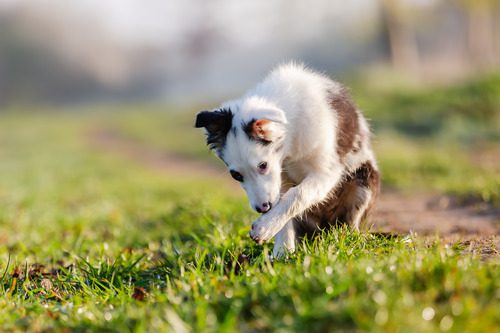What to Do if Your Dog Has a Paw Pad Yeast Infection
If your dog has been excessively licking or chewing at their paws, you may be dealing with a dog yeast infection on the paw. Yeast infections are a common issue that can cause discomfort, irritation, and a persistent bad odor. While yeast naturally exists on a dog’s skin, an overgrowth can lead to problems, particularly in warm, moist areas like the paw pads. The knowledgeable team at Animal Family Veterinary Care Center can help you better understand the signs and when to seek veterinary care. We can help your dog find relief and avoid worsening symptoms. Call us at (563) 391-9522 or book an appointment online today!

What Causes a Dog Yeast Infection on the Paw?
Yeast infections thrive in environments that are warm and damp, making a dog’s paws a perfect breeding ground. Several factors can contribute to the development of dog yeast infection paw problems, including:
Moisture and Humidity
If your dog frequently walks on wet grass, plays in puddles, or licks their paws excessively, the moisture can create an ideal environment for yeast to multiply.
Allergies
Dogs with food or environmental allergies may experience itchy, inflamed paws, which leads to licking and irritation. This can weaken the skin’s natural defenses and allow yeast to overgrow.
Immune System Imbalance
A weakened immune system can make a dog more susceptible to yeast infections. Chronic illnesses, stress, or prolonged use of antibiotics can disrupt the balance of normal skin flora.
Hormonal Changes
Conditions like hypothyroidism or Cushing’s disease can alter hormone levels and create an environment where yeast thrives.
Poor Hygiene
Dogs that do not have their paws cleaned regularly may accumulate dirt, bacteria, and fungi, leading to an increased risk of infection.
Signs That Your Dog Has a Paw Pad Yeast Infection
Identifying the symptoms of a dog yeast infection on the paw early can help you seek timely veterinary care. Some of the most common signs include:
- Excessive Licking and Chewing: Dogs experiencing a yeast infection will often lick or chew their paws in an attempt to relieve discomfort. This can lead to further irritation and worsen the infection.
- Redness and Swelling: The paw pads may appear inflamed, red, and swollen due to irritation from the overgrowth of yeast.
- Foul Odor: A distinct, musty, or “corn chip” smell is a telltale sign of a yeast infection. This odor is caused by the yeast metabolizing on the skin.
- Greasy or Discolored Fur: Dogs with a yeast infection on their paws may have oily fur around the affected area. The fur may also take on a brownish or reddish tint due to constant licking.
- Cracked or Thickened Skin: In chronic cases, the paw pads may become thick, crusty, or cracked, making it painful for the dog to walk.
Is It Time to Visit Your Veterinarian?
If you notice any of these signs, it is important to seek professional care. Dog paw yeast infection issues can worsen if left untreated, leading to discomfort and secondary infections. Your veterinarian can diagnose the infection and recommend appropriate treatment options tailored to your dog’s needs. Contact Animal Family Veterinary Care Center at (563) 391-9522 or book an appointment online for a thorough examination and expert guidance on your dog’s paw health.
Addressing a Dog Yeast Infection on the Paw
Veterinary treatment is essential for managing a dog paw yeast infection problem. Depending on the severity, your veterinarian may recommend one or more of the following options:
Medicated Shampoos and Wipes
Antifungal shampoos and medicated wipes help reduce yeast overgrowth on the paws. These products contain ingredients like chlorhexidine, ketoconazole, or miconazole to combat fungal infections.
Topical Ointments
Prescription or over-the-counter antifungal creams may be applied directly to the affected area to relieve symptoms and prevent further yeast growth.
Oral Antifungal Medications
For more severe cases, veterinarians may prescribe oral antifungal medications to address the infection from within.
Allergy Management
If allergies are a contributing factor, your veterinarian may recommend dietary changes or allergy medications to reduce inflammation and prevent recurrent infections.
Regular Paw Cleaning
Keeping your dog’s paws clean and dry is crucial in preventing yeast infections. Your veterinarian may suggest a specific paw-cleaning routine to maintain healthy skin.
How to Prevent Future Paw Yeast Infections
Preventing a dog yeast infection on the paw involves maintaining proper hygiene and addressing any underlying health concerns. Here are some proactive steps to help keep your dog’s paws healthy:
- After walks or playtime in wet environments, be sure to dry your dog’s paws thoroughly to eliminate excess moisture.
- Trimming the hair around the paws helps improve airflow and reduces the likelihood of yeast accumulation.
- Feeding your dog a high-quality, nutrient-rich diet supports a strong immune system and can help reduce the risk of skin infections.
- Regular check-ups allow veterinarians to monitor your dog’s skin health and catch any early signs of yeast overgrowth before it becomes a problem.
A dog paw yeast infection can be frustrating for both you and your pet, but with the right approach, relief is possible. Recognizing the signs early, seeking veterinary care, and taking preventive measures can help your dog stay happy and comfortable. If you suspect your dog has a paw yeast infection, call Animal Family Veterinary Care Center at (563) 391-9522 or book an appointment online today to get professional help.
Recent Posts
About Us
Animal Family Veterinary Care offers an extensive range of services all in one place, so we can meet your pet’s needs in almost every situation. Our veterinarians in Davenport treat dogs and cats because every pet is unique and important.